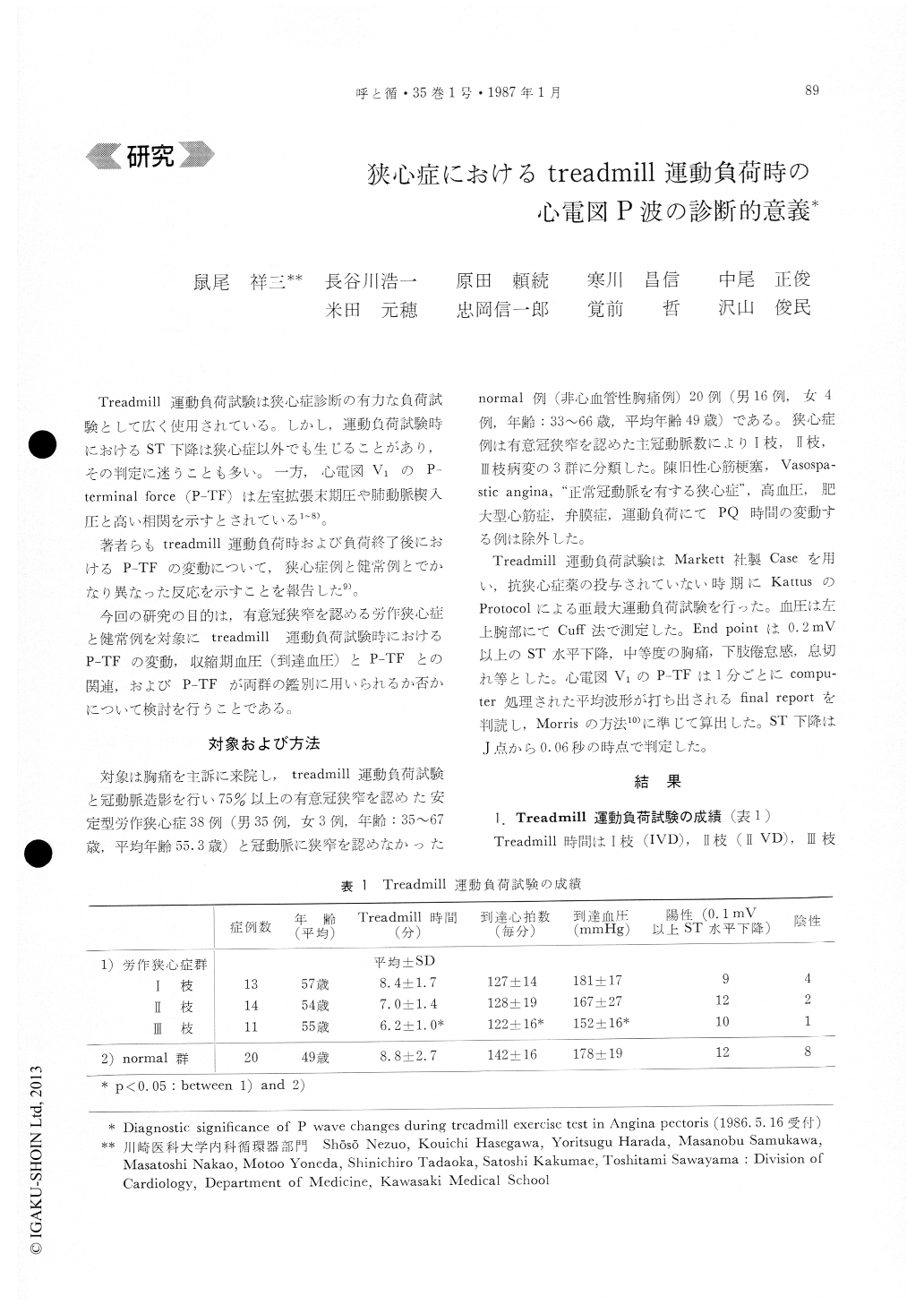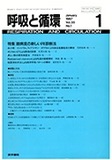Japanese
English
- 有料閲覧
- Abstract 文献概要
- 1ページ目 Look Inside
Treadmill運動負荷試験は狭心症診断の有力な負荷試験として広く使用されている。しかし,運動負荷試験時におけるST下降は狭心症以外でも生じることがあり,その判定に迷うことも多い。一方,心電図V1のP—terminal force (P-TF)は左室拡張末期圧や肺動脈楔入圧と高い相関を示すとされている1〜8)。
著者らもtrcadmill運動負荷時および負荷終了後におけるP-TFの変動について,狭心症例と健常例とでかなり異なった反応を示すことを報告した9)。
In order to assess the clinical usefulness of P-terminal force (P-TF) response in V1 during and after treadmill submaximal exercise test, 38 patients with exertional angina and 20 normal subjects were studied.
At rest, P-TF showed no significant differences be-tween patients and normal subjects.
At end point of treadmill test, P-TF was significantly greater in patients when compared to normal subjects (p<0. 05). Moreover, P-TF recovery time to control value after exercise was significantly delayed in patients than in normal subjects (p<0.01).
The sensitivity of abnormal P-TF response (3.0 msec mV or greater) for angina pectoris was 71%, the specificity 87. 4% and the predictive value S7%.
The sensitivity of abnormal P-TF recovery time (6.0 min or more) for angina pectoris was 84%, the speci-ficity 76% and predictive value 89%.
The sensitivity of either abnormal P-TF response (3.0msec mV or greater) or abnormal P-TF recovery time (6.0 min or more) for angina pectoris was 89%, the specificity 65% and the predictive value 83%.
Similar results were observed in selected subjects (including patients and normal subjects) with ST de-pression of 0.1mV or more at end point.
At end point, systolic blood pressure (SBP) response was good and P-TF was small in normal subjects. In one vessel disease patients, SBP response was good when P-TF was great at end point. On the contrary, in three vessel disease patients SBP response was poor and P-TF was great.
It is our conclusion that the abnormal P-TF at end point, abnormal relation of SBP response and P-TF at end point and abnormal P-TF recovery time after exercise were clinically useful in identifying patient with angina pectoris.

Copyright © 1987, Igaku-Shoin Ltd. All rights reserved.


